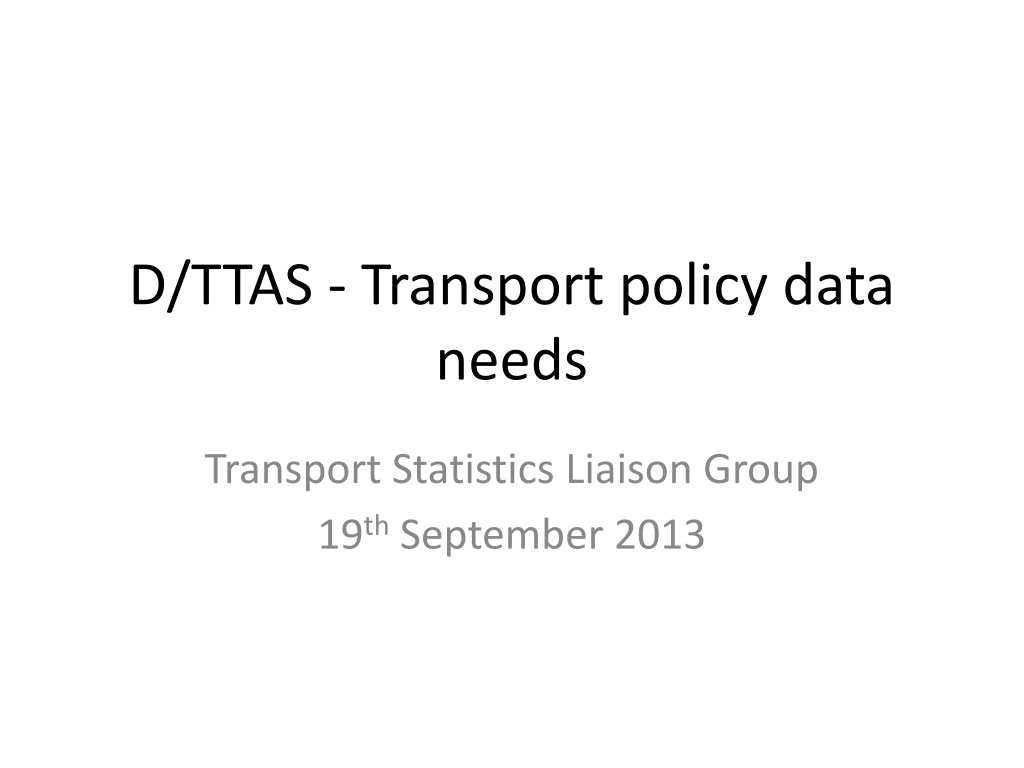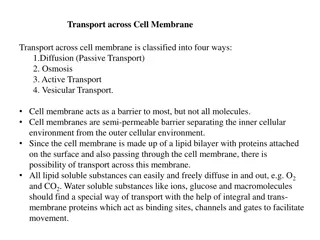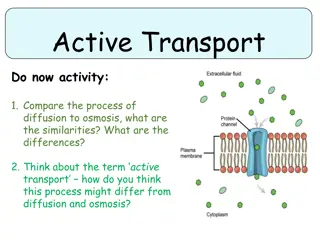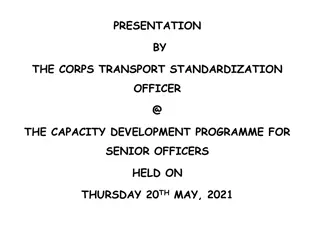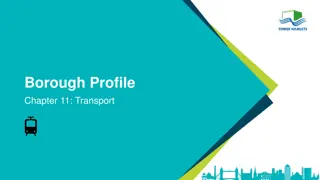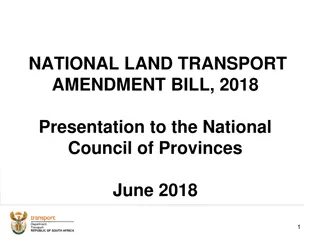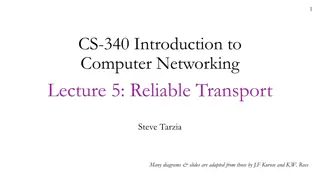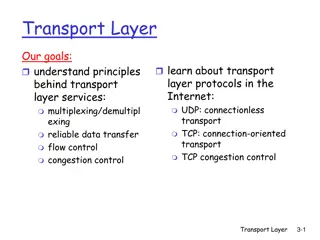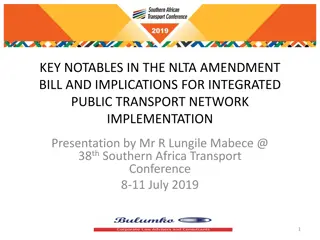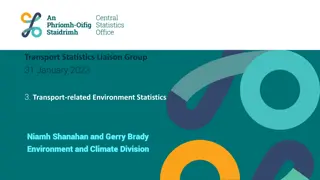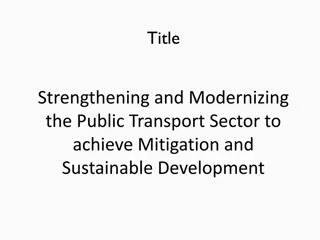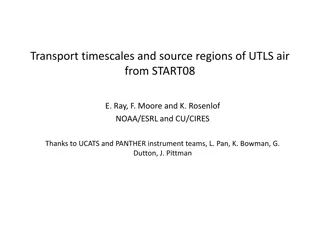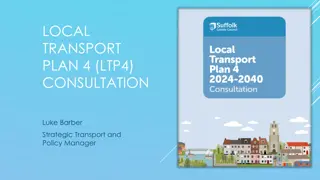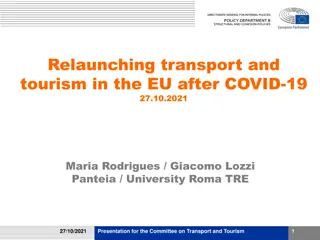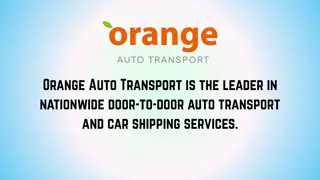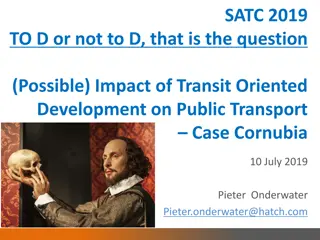Overview of Transport Policy Data Needs and Goals
The provided content outlines the transport policy data needs and goals, focusing on maintaining infrastructure, driving efficiencies, improving public transport experience, reducing road fatalities, and enhancing trade and tourism support. Key performance indicators (KPIs) and previous goals are also discussed, highlighting the importance of measuring progress and aligning future directions with past objectives. Key statistics issues from 2007/08 are identified regarding commuting demand, lack of national measures, and challenges in assessing commercial and environmental impacts.
Download Presentation

Please find below an Image/Link to download the presentation.
The content on the website is provided AS IS for your information and personal use only. It may not be sold, licensed, or shared on other websites without obtaining consent from the author.If you encounter any issues during the download, it is possible that the publisher has removed the file from their server.
You are allowed to download the files provided on this website for personal or commercial use, subject to the condition that they are used lawfully. All files are the property of their respective owners.
The content on the website is provided AS IS for your information and personal use only. It may not be sold, licensed, or shared on other websites without obtaining consent from the author.
E N D
Presentation Transcript
D/TTAS - Transport policy data needs Transport Statistics Liaison Group 19thSeptember 2013
SoS 2011-14 Key Strategies Maintain road and public transport infrastructure and implement improvements where funding is available Drive efficiencies and rationalisation in the public transport companies in the context of falling subsidies Encourage more people out of their cars by improving their experience of public transport through initiatives like integrated ticketing, better stations, better bus stops and real-time passenger information, safe cycling and attractive walking Maintain the downward trend in road fatalities and injuries Ensure that our airports and ports provide efficient and competitive support to trade and to tourism
Some KPIs from SoS Related KPIs very much at high level; for example; Aviation - increase number of routes operating into and out of Ireland by 2014 Increased passenger throughput at State airports Less than 200 road fatalities per annum Maintained or improved journey times and reliability of public bus and rail services as measured by the Quarterly Performance Reports published by the NTA Trends in public transport passenger numbers, including increased public transport share of total travel as measured by the CSO s National Travel Survey Improved accessibility on bus, rail and taxi services.
2008-2011 SOS Goals Previous SoS based on a different mandate Cut travelling times Improve safety Deliver real commuting choice Reduce congestion Protect the environment Perhaps likely that future policy directions could be more in line with these past goals Policy goals can change importance of broad measures of progress/improvements
Statistics issues identified 2007/08 Commuting 25-30% of km demand no understanding of majority of demand No national measure of trip volumes, mode share, distances travelled etc. Commercial demand issues: High level knowledge through Road Freight Survey discussion around need for more spatial knowledge, port linkages, foreign vehicles in ROI Virtually no knowledge of non-freight demand For all goods/commercial movement issue around being able to quantify associated value of goods (freight, ports & airports) And competitiveness/costs of commercial transport Lack of an aggregated demand measure of vehicle km Poor estimates of relative road demand (motorway/national/regional etc.) Environment & energy statistics and improving link back to fleet & demand Measure or indicator of travel times and congestion Measures of integration and accessibility Availability of spatial planning measures in transport context
Post 2007/08 improvements CSO Transport Omnibus first published in December 2007 Additions to omnibus since then: Detailed vehicle km estimates by vehicle type, year, month Public transport flows by time of day etc. Airport pairings CSO 2009 National Travel Survey filled major gap Provided one off picture of key indicators for all trip purposes (trip volumes, mode shares, distances travelled etc.) CSO National Travel Survey repeated 2012, 2013, 2014 Environment & energy improvements in understanding due to vehicle km estimates and emissions standards but commercial demand remains a problem.
Post 2007/08 outstanding issues? Freight/commercial demand: knowledge remains similar, although aggregate vkm figures available value of goods still regularly raised competitiveness and/or transport costs to industry Congestion no measure (or definition!) NTS provides peak/off-peak journey times by mode useful for long term monitoring of travel times Measuring accessibility 2009 survey some questions regarding access to public transport and regular use of a vehicle Survey also identified large share of people who did not travel on survey day Relative road type demand shares (e.g. discussion on importance/ relative value of and demand on regional roads) Integration Spatial planning measures
Other data and work Range of other information with national coverage: National Transport Authority schools surveys, national travel survey 2012, rail survey AVL information? National Road Authority road counters Also NRA road side surveys(?) Revenue transport fuel statistics SEAI energy statistics and EPA emissions statistics
Key Issues CSO transport omnibus essential source of information within Department But some key policy goals and investments not covered by statistics ? Annual capital investment and subvention levels For example MIU investment of 16bn statistics to measure outcomes Is cost of and revenue from transport important (e.g. fuel prices, excise, VRT, public transport fares)? But need to balance coverage and providing the most important information: Evolve the CSO omnibus co-operatively And/or potential merit in high level transport key indicators annual update as early as possible each year? Agreed on importance of National Travel Survey but type of survey needed and how best to progress co-operatively? Congestion and travel times will return as key issues need to measure!
